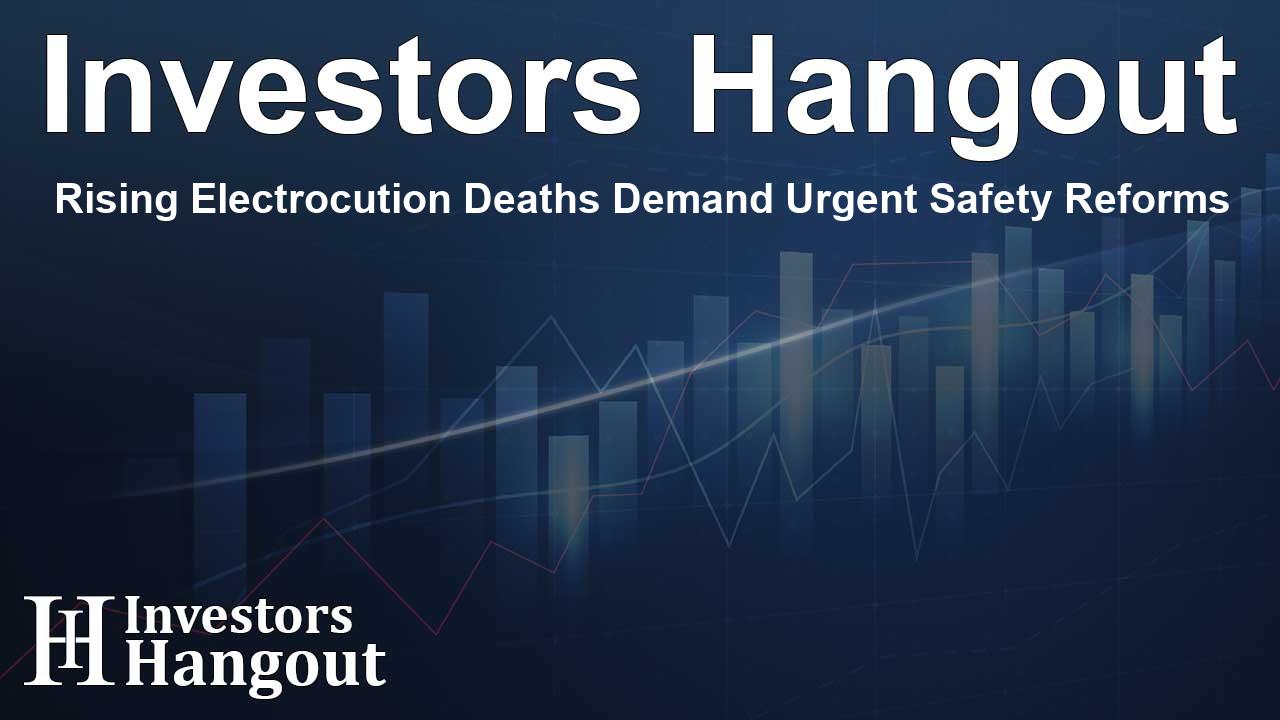Rising Electrocution Deaths Demand Urgent Safety Reforms

Understanding the Alarming Rise in Electrocution Deaths
In recent years, there has been a significant rise in electrocution deaths occurring on construction sites. This troubling trend has doubled in the last few decades, prompting attention and concern from safety advocates. Gorayeb & Associates, a prominent law firm dedicated to protecting the rights of injured construction workers, is calling for immediate reforms to enhance safety protocols and accountability among employers.
The Statistics Behind Electrocution Fatalities
The statistics tell a revealing story. What once stood at approximately 150 fatalities annually in the construction industry has surged to an estimated 300 deaths each year. This data, collected by the Construction Research and Training Centre, highlights a critical need for intervention and enhanced safety measures to protect workers from preventable accidents.
A Call for Accountability
In the words of Christopher J. Gorayeb, Founder and Managing Partner of Gorayeb & Associates, electrocution represents one of the most preventable causes of fatalities on construction sites. The firm, with its forty-year history of securing nearly two billion dollars in verdicts and settlements, emphasizes the urgency for contractors and employers to adhere strictly to safety standards and labor laws.
Key Factors Contributing to Electrocution Incidents
Construction workers face a myriad of electrical hazards on a daily basis, ranging from overhead power lines to underground cables, temporary wiring, and defective equipment. Some of the most common causes of electrocution include:
- Failure to properly alert workers about nearby power lines.
- Defective or poorly maintained electrical equipment.
- Lack of proper grounding and insulation on power tools.
- Wet conditions exacerbated by electrical materials.
- Inadequate protection from high-voltage lines.
- Striking underground power lines during excavation activities.
- Overloaded circuits lacking appropriate breakers.
Legal Obligations of Employers
New York law mandates employers to uphold specific safety measures. This includes identifying voltage levels prior to initiating work, maintaining proper warning signage near electrical hazards, ensuring workers wear insulated protective gear, and informing utility companies at least five working days before beginning any tasks near power lines. When employers neglect these responsibilities and accidents occur, they must face accountability for their oversight.
Consequences of Electric Shocks and Electrocutions
Workers who experience electric shocks or electrocutions often endure severe consequences, including:
- Severe burns and broken bones
- Cardiac arrest and nerve damage
- Vision and hearing impairment
- Permanent disability affecting their quality of life
The firm strongly recommends that any worker suffering an injury from electrical accidents seek immediate medical attention, even for seemingly minor injuries. It is crucial to document all injuries meticulously through photographs and detailed medical records, and to consult an experienced construction accident attorney to safeguard their rights and pursue potential compensation.
Gorayeb & Associates: Advocating for Workers' Rights
With over 12,000 clients represented and significant verdicts secured, Gorayeb & Associates stands as a formidable advocate for construction workers. Their landmark achievements include a $15 million settlement for a worker injured due to a lack of OSHA protections and a $12.8 million award for a laborer who became paraplegic following a roof collapse.
The firm offers bilingual services and actively conducts "Know Your Rights" sessions across various neighborhoods, including the Bronx, Queens, Brooklyn, and Manhattan. These sessions aim to educate workers about their safety protections guaranteed under New York law.
Frequently Asked Questions
What prompted Gorayeb & Associates to issue the safety alert?
The firm has observed a disturbing trend in the rise of electrocution deaths on construction sites, which have nearly doubled in recent years.
What are some of the common causes of electrocution on construction sites?
Common causes include contact with power lines, inadequate protection, and poorly maintained electrical equipment.
What legal responsibilities do employers have regarding electrical safety?
Employers must identify potential hazards, maintain warning signs and insulated gear, and inform utility companies before work starts near power lines.
What should a worker do if injured by electric shock?
Injured workers should seek medical attention, document their injuries, and consult with a construction accident attorney.
How does Gorayeb & Associates support injured workers?
The firm provides legal representation to secure compensation for injuries and regularly educates the public through rights seminars.
About The Author
Contact Owen Jenkins privately here. Or send an email with ATTN: Owen Jenkins as the subject to contact@investorshangout.com.
About Investors Hangout
Investors Hangout is a leading online stock forum for financial discussion and learning, offering a wide range of free tools and resources. It draws in traders of all levels, who exchange market knowledge, investigate trading tactics, and keep an eye on industry developments in real time. Featuring financial articles, stock message boards, quotes, charts, company profiles, and live news updates. Through cooperative learning and a wealth of informational resources, it helps users from novices creating their first portfolios to experts honing their techniques. Join Investors Hangout today: https://investorshangout.com/
The content of this article is based on factual, publicly available information and does not represent legal, financial, or investment advice. Investors Hangout does not offer financial advice, and the author is not a licensed financial advisor. Consult a qualified advisor before making any financial or investment decisions based on this article. This article should not be considered advice to purchase, sell, or hold any securities or other investments. If any of the material provided here is inaccurate, please contact us for corrections.
